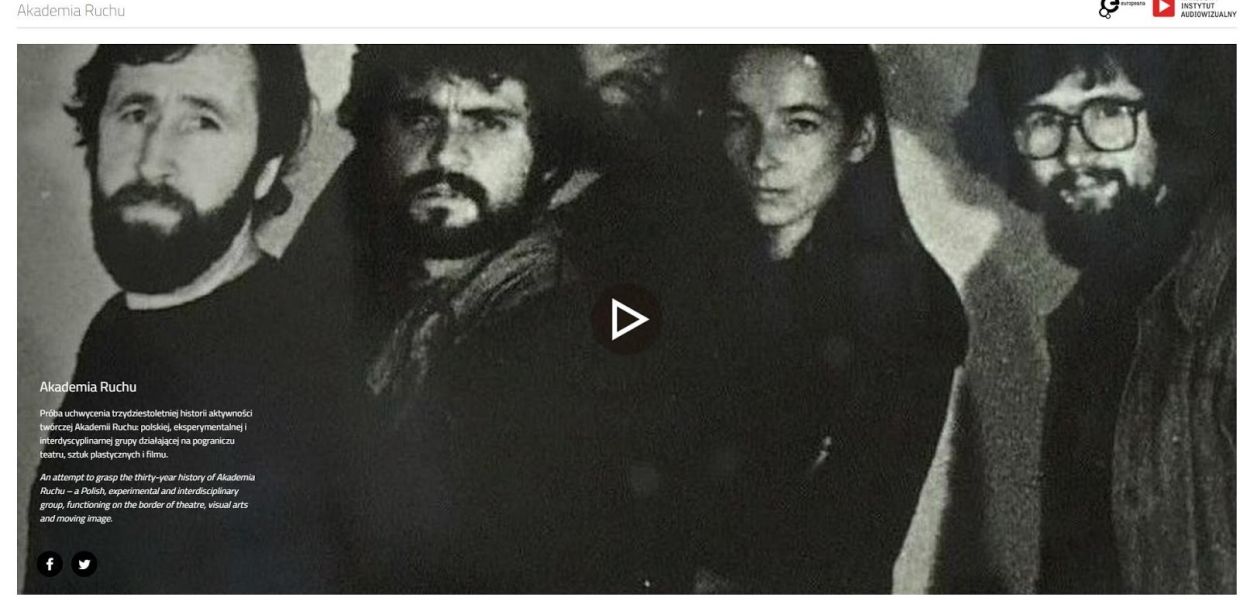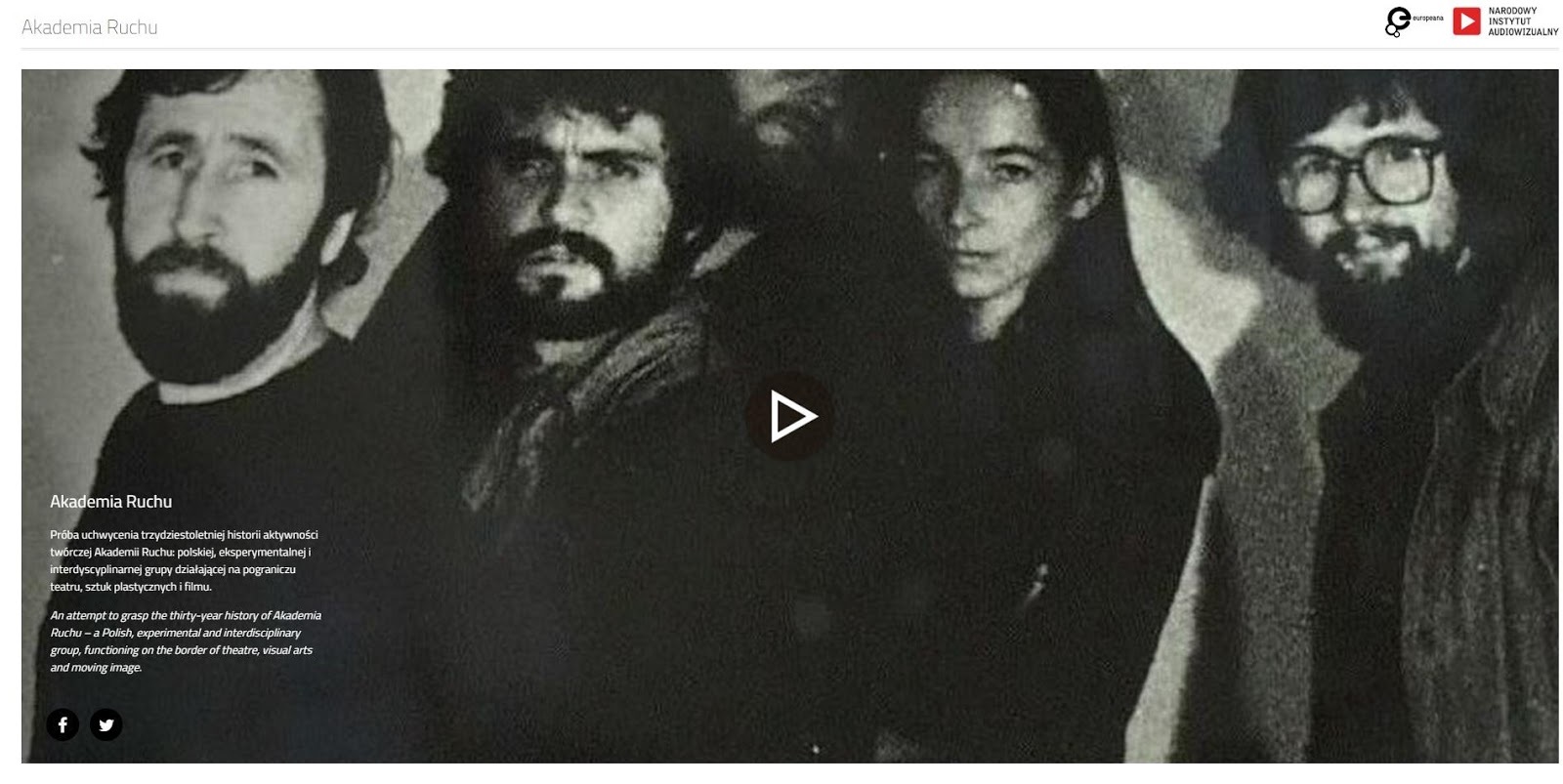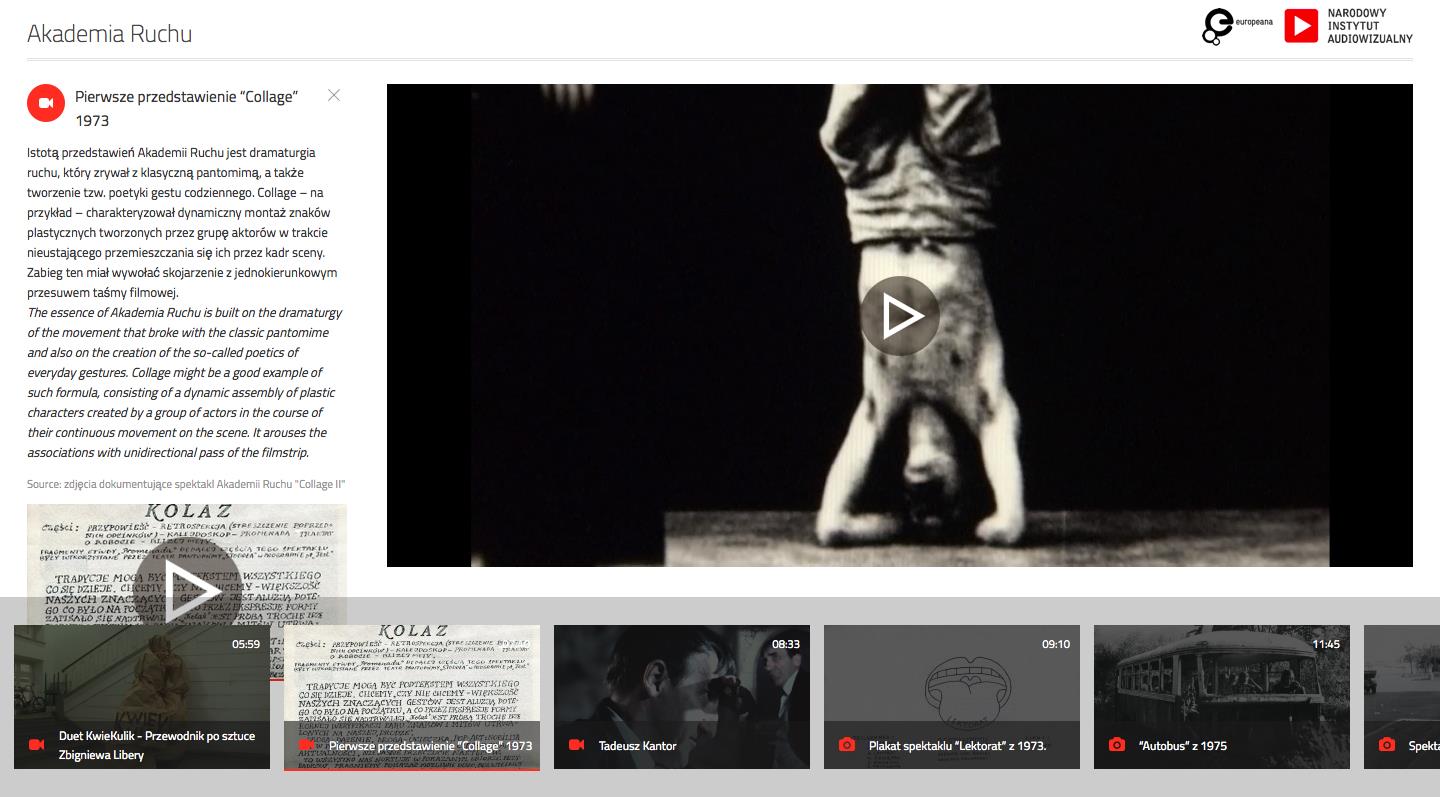Breathing new life into archival material with interactive documentary player

In celebration of World Theatre Day, which takes place every year in March, the National Audiovisual Institute of Poland (NInA) has launched with a new storytelling platform dedicated to the Academy of Movement.

A screenshot of the Akademia Ruchu. By NInA.
“Back then, the word ‘movement’ was used in reference to the alternative culture that was born and blossomed as part of the cultural movements on university campuses. And the theater that grew out of that student movement was a voice of its generation. It was a strong determining factor for everyone who entered that space, because that theater had to express very important, relevant truths: the truths of its social circles and the truths of that generation”. (W. Krukowski, “The Academy of Movement”)
When making a documentary countless hours of B-roll footage, images, and narrations hit the cutting room floor. However, over the last half decade, with advancements in online interactive storytelling software, documentaries have been given newfound life. Producers can now enhance final cuts in unique ways so that viewers can dive deeper into source content or explore secondary material which makes the viewing experience that much richer.
For anyone looking to give previously produced documentaries a second life, or enrich the ones they are currently creating, Europeana provides a valuable resource of digitised archival material. We are proud to present a sparkling example of such re-use: Akademia Ruchu.
The starting points for the storytelling platform dedicated to the Academy of Movement were a documentary film by Andrew Sapija, sharing the same title, and VidLink, an interactive storytelling platform developed by Videodock and The Netherlands Institute for Sound and Vision. Curatorial work, translations and content sourcing was carried out by the National Audiovisual Institute of Poland as part of the Europeana Awareness project. The entire collaboration was overseen by Sound and Vision.
As Michal Merczyński, the director of NInA, reflects on the project, “The digital narrative around the Academy of Movement combines both NInA’s competencies and interests. The online world is our natural environment, and documentary film, recording and disseminating the most important events in Polish culture - and this includes the actions of the Academy of Movement - have been included in the programme of the Institute for years.
I am glad that this is once again a project with a European dimension, which we realised jointly with the Netherlands Institute for Sound and Vision - a recognised leader in innovation and research with regard to web projects. I hope that the result of our collaboration will reach a wide range of culture and digital storytelling fans.”

A screenshot of the Akademia Ruchu. By NInA.
Filmed in 2006, the documentary was an attempt to capture the Academy of Movement’s thirty years of creative work. The film features archival footage, shots of performances, and commentary from members of the group. Wojciech Krukowski leads us through each stage of the Academy’s work and presents key historical events in Poland inextricably tied to the story of the group. Krukowski was an artist, a founding father of the academy, and a mentor to several generations of artists, while also serving as the director of the Centre for Contemporary Art in Warsaw.
Wojciech Krukowski died in 2011 and though The Academy of Movement still exists today, and continues to rehearse and perform, a chapter of their work has permanently finished. Yet by leaving behind remnants of their ideas, sketches, and scripts, Krukowski left an archive of knowledge that would live on and provide a wealth of inspiration for new performers, encouraging them to explore art themselves.
As an art group that reaches beyond the boundaries of alternative theater by combining theater, performance, and visual arts, viewers are unable to remain indifferent to the world presented to them. Startled out of neutrality, they are forced to assume an intellectually active role. The screening of Andrzej Sapija’s film Academy of Movement on the storytelling platform is intended to provoke and spark a similar reaction in viewers, forcing them to become involved, if only by moving their cursor from object to object. It encourages the audience to continue their exploration, and to uncover the world of the Academy of Movement through excerpts from performances.
The call to action the supplementary material provides complements Krukowski’s own ideas about audience participation. “Immobility”, he once said, considering an audience entranced by a performance of the play, Bus, “leads to a certain physiological crisis”.
Enhancing the film with these archival materials serves, finally, as an attempt to respond to a real need felt by every viewer: the desire to expand their knowledge. When we watch a documentary, we feel the urge to learn more, to satisfy our curiosity about a performance mentioned, or to catch a glimpse of what the particular artists who appear do in their wider professional lives.
In total, the film includes a compilation of twenty additional pieces of archival footage, recordings and excerpts of performances and photographs, each of which provide that context for the virtual viewer. Not only does this encourage and enable individual exploration but, more importantly, it ensures an audiovisual experience entirely enriched by the use of these valuable archival materials.
You can watch the final documentary here.
